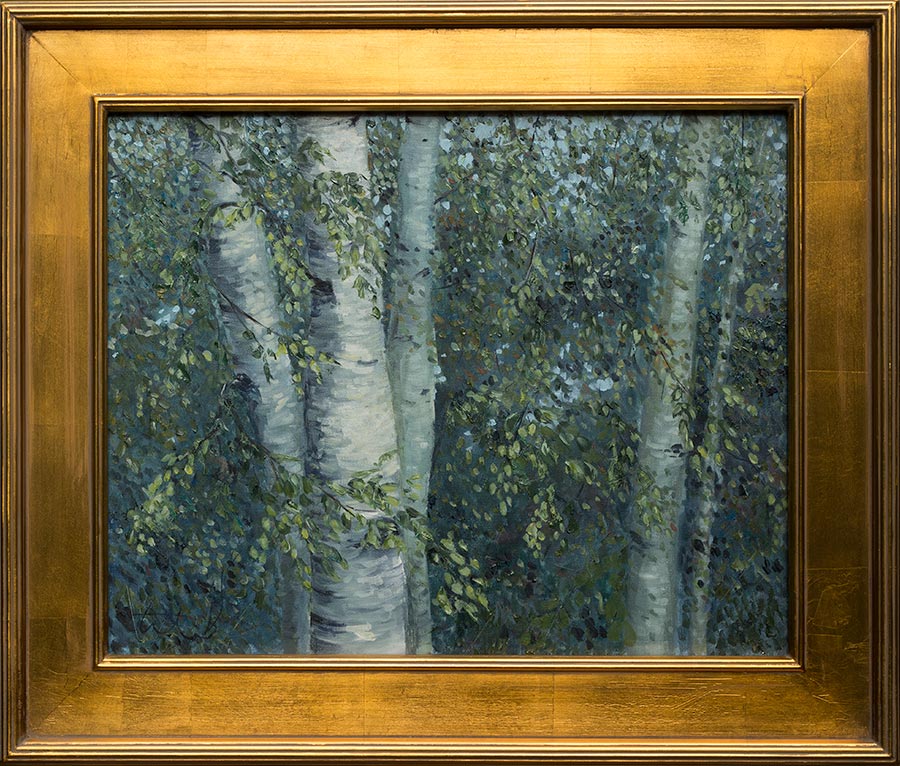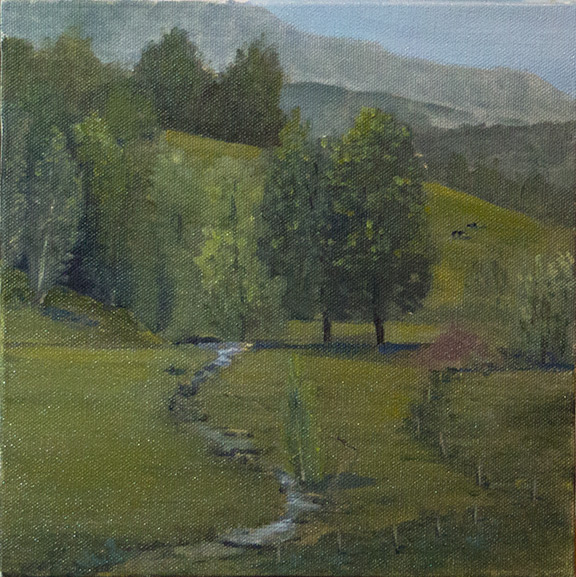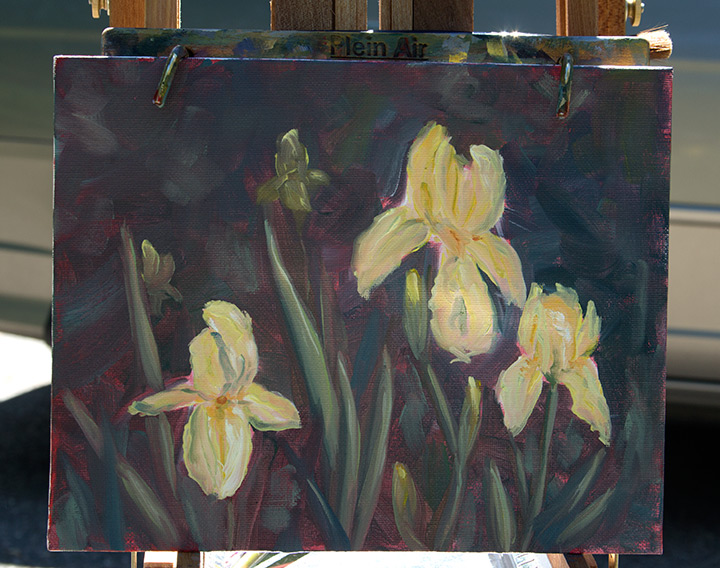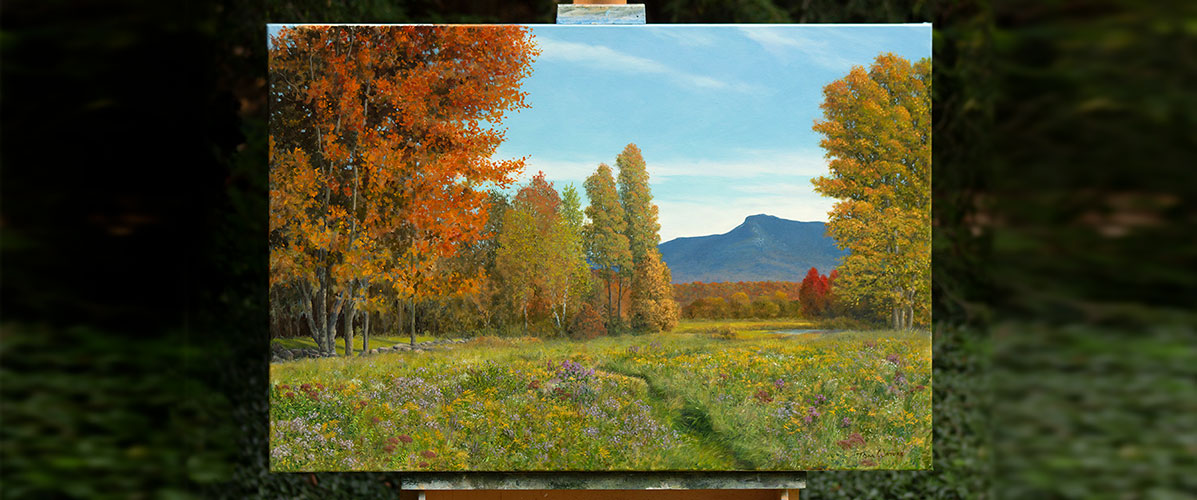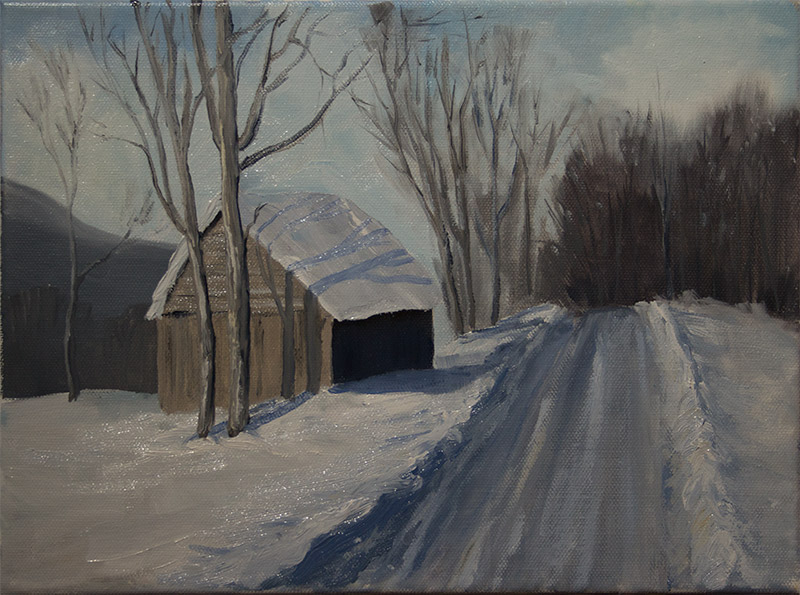Recently I decided to give oil paints a try. I thought it worth sharing some of my experience and frustrations with the medium. I’ve been working in acrylics exclusively the past few years. And even though I painted using oils in my late teens – that was a long time ago and I don’t remember any of it.
I haven’t actually switched to oils 100% but I want to be able to work in both mediums as the situation and mood demands. So I picked up some Windsor & Newton Water Mixable Oil paints and mediums (water mixable thinner and Liquin) and have been doing a few paintings to get a feel for them.
Coming from acrylics there are some basic things that make oils a challenge. First, the dry times. Since oils take much longer to dry, the approach to a painting has to be different. Unless you paint wet-into-wet with acrylics and use a medium or acrylic paint that stays “open” or wet longer, then you have to rethink your approach to a painting. Instead of layering and correcting colors, values, etc. all in one sitting as you can easily do with acrylics, you have to either scrape off your mistakes, wait a long time between layers, or get very good at painting thin layers that you can then carefully apply a thicker layer over in oils. The challenge is that your paint will readily mix since it stays wet. So careful planning, accurate mixing of your colors, and precise brushwork become more important when using oils.
I will probably anger some acrylic artists with this next statement, but I almost feel that working in oils forces you to be, if not a better artist, a more careful one, than working in acrylics. I know it depends on your style of painting, but in general you will want to have more control over your paint and its application when working in oils, at least working in the “alla prima” (all in one sitting) method. Certainly if you wish to develop a painting slowly over time in layers you can do that in oils, just like with acrylics but over a longer timespan. You have to develop patience. With acrylics I like that I can paint whenever I am in the zone and keep painting for as long as I want. Oils force you to take more time.
Some things work so much easier in oils. Blending and softening of edges are two prime examples. Instead of carefully planning a large painting in acrylics that requires careful blending, lots of edge softening, and challenging reflections – in oils you have plenty of time to go back into a passage and do these things.
Another advantage of oils is they hold their shape much better. With acrylics, even the heavy body acrylics I use, unless you use a medium to add stiffness they flatten out a lot as the water in the paint evaporates and dries. Oils keep their shape, giving you nice gestural brush marks. I really enjoy this about the paint.
I still must say I hate the dry times. In my first attempt I kept resting my hand on the surface of the painting to do detail work and messing it up, in acrylics I was used to having parts of the surface dry quickly so you can get away with this. And I hate having a finished piece that you have to carefully find a place to keep it clean and out of the way while it dries. Instead of being able to stack or store away a painting within hours, you now have to be careful where you put it and how you handle it for days (I know there are mediums that help it dry faster, but they have drawbacks too). That does not even touch upon the 6-12 month wait times recommended before varnishing!
A note about working in Water Mixable Oils (or water miscible oils – WSOs): I find the W&N brand to be sticky when using water to thin them. I quickly stopped using water for anything but cleaning the brushes because I did not like the feel of them when thinning with water. In fact, while I will use up the WSO I have, I won’t buy new ones. Instead I will start working with regular oils. I also found the water mixable thinner did not play well with Liquin. Supposedly you can use any regular oil medium with these paints, but the thinner and liquin seemed to repel each other when mixed.
I’ve done a handful of paintings now in oils with mixed results. I know I have to re-learn how to work with them more effectively and that will take time and practice. Below are some of my results, some bad, some (at least one) that I felt came out well.
I would love to hear from any of you out there that have made this change. What have you experienced. Did you stick with both mediums? What tips can you give to anyone making the switch or trying oils? I’ll follow up with a part 2 of this topic in some weeks or months time after I get more time with them and a better grasp of how to speed or smooth the switch.
